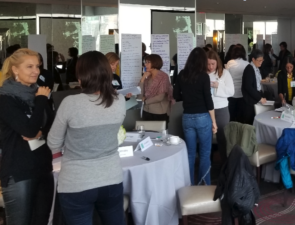Ideation is the process of generating as many ideas as possible to come up with potential solutions. For many, it is an intimidating and overwhelming process that keeps them from making progress in their life design.
Here are five steps to guide you through the ideation process:
1. Frame a good problem
It can be hard to start the ideation process if you’re starting with the wrong question. To get good ideas, frame your problem well. After all, if you start with a poorly framed problem, you’re left with a weak base to build ideas upon.
What exactly makes a good problem, though? A good problem is neither too broad nor too specific and is open-ended. Make sure that the problem’s parameters are well defined and articulated.
2. Warm-up physically
The key to ideation is to generate as many ideas as possible. But how often have you tried to come up with ideas, only to find yourself drawing a blank? We often struggle to produce ideas because the analytical part of our brain is continuously judging everything we come up with. This step prepares us for creativity by quieting that part of our brain.
The state we’re looking to achieve is called transient hypofrontality, a state in which our brains are scientifically proven to be at their most creative. Moving to this state helps us ideate without fear, embarrassment, or worry about judgment. By entering this state, we are preparing ourselves to create an assortment of original solutions novel ideas.
A great way to induce this is through physical movement. Try shaking your left hand above your head, counting down from seven aloud. Now do the same with your right hand and both feet to get feeling more relaxed and ready to ideate!
3. Go for quantity, not quality
Remember, we’re not judging our ideas at this stage. Here, no idea is a bad idea, so try to come up with as many as possible. The goal is quantity over quality because we want to keep the flow of ideas going. Don’t worry about how crazy or silly an idea may be. After all, the wilder the idea, the better to help you break out of the box and spark innovation!
You should work with others and build upon ideas in teams if possible. Outside help gets us to places we wouldn’t have gone to on our own. Take the lead from companies like Apple and Google and create a community idea board. Place a board in an interstitial place and write your problem on top. It’s a great way to crowdsource ideas from a diverse profile of individuals and involve those who are more introverted. If you’re stuck and looking for a dedicated community to radically collaborate with, check out the Designing Your Life Workshops.
4. Organize ideas
Now that you hopefully have an extensive collection of ideas, organize your list by grouping, combining, and selecting the generated ideas to further develop them. By the end, you should be able to extract insights that lead your next action. The ultimate goal is not to develop a perfect idea but rather to develop some good ideas to prototype.
5. Cull and prototype ideas
Now is the time to cull the ideas and come up with a shortlist. Having selection criteria, such as making sure the idea is relevant or inspirational, will help you identify and select the best solutions. Testing each idea (via informational interviews, volunteer work, shadowing, etc.) serves as a guidepost to know you’re headed in the right direction.
You may not always find the answer to your initial problem right away. This process may reveal that you need to redefine your problem, that you need to have another more focused ideation session with a more diverse group of individuals, or that you need more disciplined ideation sessions.










